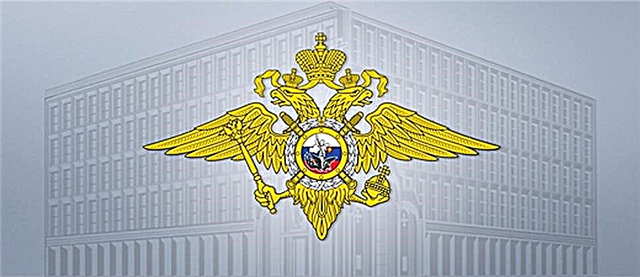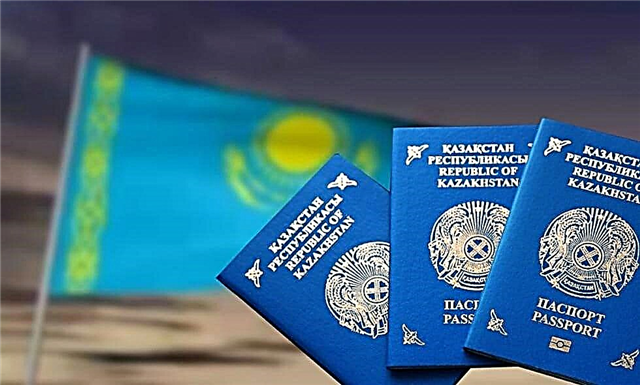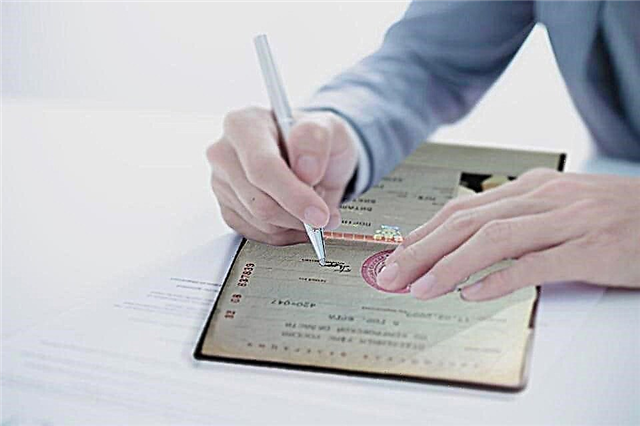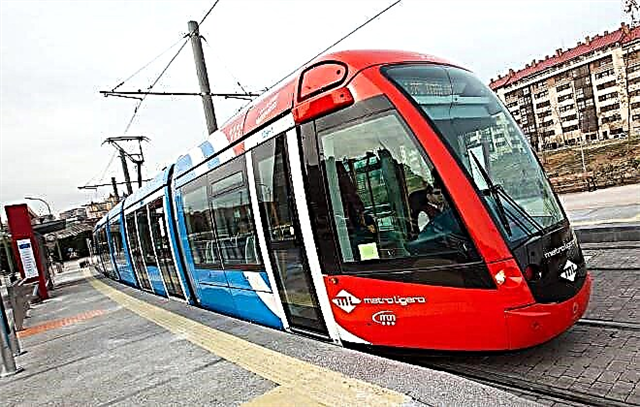More than a million Russians visit Spain every year, and a large proportion of them spend at least a few days in Madrid. As in other large EU cities, the municipality of the Spanish capital is fighting against the dominance of cars on the streets, including by developing a system of urban transport. Therefore, before traveling to the capital of the Kingdom of the Sun, it is worth finding out how public transport works in Madrid.

Available modes of transport
Despite the fact that Spain has been one of the poorest countries of the European Union for many years, the state of the municipal transport infrastructure in most large cities of the country is not much inferior to the organization of transport among the recognized European leaders - Germany and Great Britain.
More than 5 million people move around the city every day using public transport.
As in many other metropolitan areas in Europe, all public transport in Madrid is managed by one government organization - the Consorcio Regional de Transportes de Madrid (CRTM), created in 1985. On the consortium's website, you can familiarize yourself with the many nuances of the functioning of Madrid public transport and even plan your trip.
As of 2021, the main ways of getting around the Spanish capital and its environs are:
- underground;
- high-speed tram (some of its lines are combined into a light metro system);
- buses;
- cable car;
- Taxi;
- suburban trains.
Let's consider each of them in more detail.
Metro
As in other European cities, the main urban transport in Madrid is the metro, carrying more than 500 million people a year. The subway was opened in 1919, and as of 2021 it consists of 12 lines and one branch with a total length of more than 290 km, on which about 290 stations are located. The system is serviced by a mobile fleet of more than 2,300 trains.
An important nuance for guests of the city: not all metro trains are equipped with an automatic door opening system. In some of them, to enter and exit, you need to turn up a special lever, and slightly more modern options are equipped with a button that controls the doors.
A diagram showing the main tourist and infrastructural objects of the city will help to navigate the rather complicated system of the capital's metro.

The most important lines for tourists are number 8, going to Barajas airport, and number 1 - the only one leading to the Atocha train station. Navigation during trips is facilitated by the fact that almost all stations have information boards with a map of the immediate vicinity.
The stations are open to visitors from 6 am to 01.30 am, the interval of traffic during the day, depending on the line, is from 3 to 5 minutes, in the dark it increases to 10–15 minutes.
You can find out the current timetable for each of the lines in the corresponding section of the official website of the Madrid metro.
Trams
The main three lines (ML1, ML2 and ML3) of the high-speed tram of the capital of Spain are called Metro ligero, which translates as "light metro". This is due to the fact that 23 out of 37 stations of the system are underground.
The only fully surface tram line, ML4, connects Madrid with the Parla suburb and features a circular route. Unlike the metro, where traffic is left-hand, trams in the city move on the right.
The general scheme of the “light” and “real” metro of Madrid will help you plan your movements around the city using Metro Ligero.

The ML4 (Parla Tram) branch is traditionally depicted on a separate diagram.

The operating mode of lines from the first to the third is from 6 am to 2 am, and the interval of movement does not exceed 7 minutes. The circular line operates in a slightly different mode: from 04.45 to 00.45 with an interval of exactly 7 minutes, while the trip along the entire route will take you up to half an hour. You can clarify the current traffic schedule for each of the routes on the "light metro" website.
City buses
In addition to rail types of public transport, there is a well-developed network of intercity buses in the capital of the Kingdom of the Sun. They can be conditionally divided into 5 groups:
- daytime;
- night;
- excursion;
- airport;
- express trains to the airport.
Most of the daily routes follow metro lines, so Madrid bus stations can often be found near the metro entrance. The route of buses of this category is shown below.
The working hours of daytime buses run from 6 am to midnight, and the interval does not exceed 15 minutes.
After the day buses leave the streets of the city, night routes start from Plaza de la Cibeles, the interval between which is usually about half an hour. The route map for this type of bus will help you plan your nightlife.
Both day and night buses are blue and stop exclusively at stops. To get off the bus at the next stop, you need to press a button in the cabin, and to stop it while waiting at the station, you need to raise your hand when it approaches you.
It is easy to see that both day and night buses serve only the central part of the city and its surroundings. To get to the suburbs, you must first get to Madrid South Bus Station or Principe Pio or Auto Reus stations.
Tourist bus routes differ from ordinary ones in appearance (these are red "double-decker", as in London), route and price. Tickets for them must be bought either from travel agencies or from the driver. In total, there are three such routes in the capital, the peculiarities of their work can be found on the website of the Madrid City Tour company.
Regular buses to the airport have routes No. 101 and No. 200 and are no different from other daytime buses.
But airport express trains (Línea Exprés Aeropuerto) differ from the others both in appearance (they have yellow instead of blue) and in the timetable (they run around the clock with an interval of 15 (day) to 35 (night) minutes). The procedure for paying for travel is also different - the cost is 5 € and is paid on the spot.
The famous cable car
Since 1969, one of the city's famous landmarks has been the cable car in Madrid, known as the Teleférico de Madrid. Its length is almost 2.5 km, the journey along which takes 11 minutes. It connects the city's largest park, Casa de Campo, with another large park, Parque del Oeste.
The attraction does not work every day (usually it is open on holidays, weekends and during the tourist season), so the current schedule should be checked on its website.
It will cost an adult 4.50 € for a one-way trip to the funicular in Madrid. The round trip will cost 6 €. For children from 4 to 12 years old and seniors over 65, a one-way trip will cost 4 €, and a round trip - 5 €.
The carrying capacity of each cabin is 450 kg, which is 5 adults.
Taxi
If the interval, route, or comfort of public transportation is not to your liking, you can use one of the many taxi services available. The total number of cars exceeds 15 thousand, so you won't have to wait long.
You can recognize a taxi in Madrid by the white color of the car and the presence of a red diagonal stripe on the front doors. You can "catch" a free car on the street by simply raising your hand.
You can also order a taxi by phone, for example, at the TeleTaxi service (+34 (91) 445-90-08) or Radiotaxi (+34 (91) 447-32-32). Please note that in this case the driver will turn on the meter as soon as he receives your call.
The fare consists of a boarding fee (2.40 €) and a mileage fee:
- € 1.05 for trips to the city center on weekdays from 6 am to 9 pm;
- € 1.20 for night and holiday trips in the center or day trips to the suburbs;
- € 1.25 for an overnight commuter ride.
Getting from the center to the airport or vice versa will always cost 30 euros.
Commuter rail
A good way to quickly and comfortably get into the suburbs of Madrid, as well as a backup option for intra-city travel, is to use the commuter trains known as Renfe. In total, there are 9 of their routes, which you can see on the diagram.

Usually the opening hours are from 6 am to 11 pm, but there may be exceptions. You can check the schedule of specific routes and book tickets on the official website of the Spanish railways.
Tariff zoning of Madrid, types and cost of tickets
Like most other settlements in Europe, the capital of Spain and its surroundings are divided into several tariff zones, which makes it possible to differentiate the fare depending on the distance:
- A - this zone includes the city center, most tourists leave it only during transfers to / from the airport.
- B1 – B3 - neighborhoods of the center and sleeping areas;
- C1, C2 - suburbs;
- E1, E2 - neighboring cities of Castilla (Toledo, Guadalajara, and so on).
The exact boundaries of the zones are shown in the diagram.

As in many other EU cities, tickets for both metro, trams and buses (day, night and regular airport) in Madrid are the same. In 2021, the following types of tickets for transport in Madrid are available:
- A ticket for 1 trip on the metro (Billete Metro) or bus (Billete Sencillo) entitles you to travel once in a bus or metro (no more than 10 stations within zone A) in one direction and costs 1.50 €.
- A ticket for a trip to the metro over 10 stations in zone A will cost 2 euros.
- An off-season metro ticket (Billete Combinado Metro) entitles you to 1 trip within any zone (but not to the airport) and costs 3 €. To get to the airport, you need to get to the Nuevos Ministerios station and change to route 8. A ticket for it is paid separately and always costs 3 €.
- A 10-ride ticket (Billete de 10 viajes) entitles you to use the metro or regular buses 10 times within any zone. It will cost 12.20 euros.
Children under 4 years of age use all public transport services free of charge.
Tourist options
For guests visiting the city for a period from a day to a week, universal travel passes Tourist Travel Pass (aka Abono Turistico) have been developed, which are of the following types:
| Zones | Validity period, days | Price, € |
|---|---|---|
| A (center) | 1 | 8.4 |
| T (center and suburbs) | 1 | 17 |
| A | 2 | 14.2 |
| T | 2 | 28.4 |
| A | 3 | 18.4 |
| T | 3 | 35.4 |
| A | 5 | 26.8 |
| T | 5 | 50.8 |
| A | 7 | 35.4 |
| T | 7 | 70.8 |
Both types of passes are valid on both types of metro, tram, bus and suburban trains, but a category A ticket can only travel within the city center.
When purchasing the pass, the personal and passport details of its owner are indicated.
If your trip is exclusively tourist, then along with the travel card, you can purchase the Madrid Card, which allows you to visit the most famous museums in the capital for free and get substantial discounts in some hotels, restaurants, cafes and shops. Unlike other similar projects, this card does not yet give the right to free travel, although it does provide discounts on some types of transport.
The cost of the card is:
| Validity period, hours | Adult price, € | Price for children (from 6 to 12 years old), € |
|---|---|---|
| 24 | 47 | 34 |
| 48 | 60 | 42 |
| 72 | 67 | 44 |
| 120 | 77 | 47 |
You can purchase the card online or at the store at Calle Montera, 32.

How to buy tickets
Once you start planning your trip, it's worth figuring out how to use the transport in Madrid. First of all, you need to purchase a travel document:
- You can buy tickets of all categories in special machines at metro stations, ML and at major bus stops.
- The bus fare can be paid to the driver.
- Travel Pass and Metrobus can be purchased at cash desks at stations, some Bankia ATMs, and newspaper and tobacco kiosks.
For now, you can buy passes online using the CRTM mobile app. In the metro, tickets are punched in the turnstile, in buses the punch is located only near the front door, so you can only enter these cars through it.
The validated ticket must be kept until the end of the trip and presented to the controllers upon request.
Fines for travel without a ticket
Travel in Madrid by public transport must be paid for by purchasing and composting the appropriate type of ticket for the trip. Failure to comply with this rule is fraught with a fine, which is 80 euros.
Conclusion
The municipal transport of the Spanish capital allows citizens and tourists to move around the city quickly and comfortably at a very reasonable price (trips to the center by any transport will cost 1.5 euros). But the trip to the airport should be carefully planned, since the bus and metro routes following there are charged according to a different principle. A good option for a short (up to a week) visit to Madrid is buying a tourist pass.











